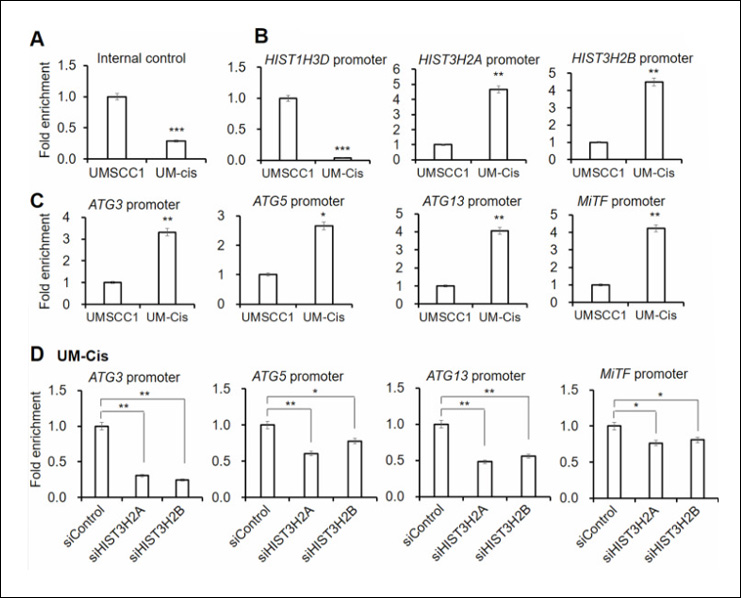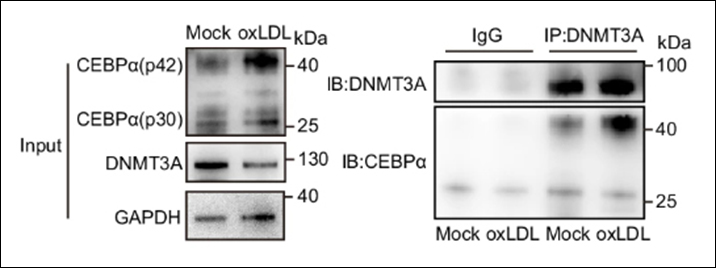Nimal S et. al. (April 2025). Reversal of epithelial to mesenchymal transition in triple negative breast cancer through epigenetic modulations by dietary flavonoid Galangin and its combination with SAHA Cell Commun Signal. 23(1):163.
This study investigates the ability of the dietary flavonoid galangin (Gal) to reverse epithelial-to-mesenchymal transition (EMT) in triple-negative breast cancer (TNBC) through epigenetic modulation. Gal, alone and in combination with the HDAC inhibitor SAHA, downregulated HDACs, upregulated HATs, suppressed mesenchymal markers, and induced apoptosis, ultimately reducing tumor progression in both in vitro and in vivo models. These findings suggest Gal as a promising adjunct to conventional therapies for treating TNBC.
Products Used: EpiQuik HAT Activity/Inhibition Assay Kit, Epigenase HDAC Activity/Inhibition Direct Assay Kit (Colorimetric)
Kumari S et. al. (April 2025). Exploration of the Therapeutic Potential of the Epigenetic Modulator Decitabine on 6-OHDA-Induced Experimental Models of Parkinson's Disease ACS Chem Neurosci.
This study examines the therapeutic potential of decitabine (DB), an epigenetic modulator, in 6-OHDA-induced experimental models of Parkinson's Disease (PD). The research demonstrates that DB treatment significantly ameliorates motor deficits, reduces inflammation and oxidative stress, and increases dopamine and BDNF levels in both in vitro and in vivo models. These findings suggest that DB could offer a promising therapeutic strategy for mitigating PD symptoms and pathology by targeting epigenetic mechanisms.
Products Used: EpiQuik DNA Methyltransferase (DNMT) Activity/Inhibition Assay Kit, EpiQuik Dnmt1 Assay Kit, EpiQuik Nuclear Extraction Kit
Xia L et. al. (April 2025). Epigenetic modifications of nuclear and mitochondrial DNA are associated with the disturbance of serum iron biomarkers among the metabolically unhealthy obesity school-age children Nutr J. 24(1):51.
This study explores the association between epigenetic modifications of nuclear and mitochondrial DNA and disturbances in serum iron biomarkers in metabolically unhealthy obese (MUO) school-age children. The research found that MUO children exhibited altered methylation patterns in nuclear and mitochondrial DNA, which correlated with disrupted serum iron levels and increased markers of metabolic syndrome and oxidative stress. These results suggest that epigenetic changes play a crucial role in the pathophysiology of metabolic syndrome related to iron dysregulation in obese children.
Products Used: MethylFlash Global DNA Hydroxymethylation (5-hmC) ELISA Easy Kit (Colorimetric), MethylFlash Methylated DNA 5-mC Quantification Kit (Colorimetric)
Cheng M et. al. (April 2025). METTL3 obstructs vascular smooth muscle cells osteogenic reprogramming by methylating Runx2 in chronic kidney disease Cheng M et. al. (April 2025).
This study investigates the role of METTL3, an RNA N6-methyladenosine (m6A) methyltransferase, in the osteogenic reprogramming of vascular smooth muscle cells (VSMCs) in chronic kidney disease (CKD). It demonstrates that METTL3 downregulation leads to increased Runx2 expression, a key osteogenic gene, thereby exacerbating vascular calcification, while METTL3 overexpression has the opposite effect. The research suggests that METTL3's regulation of Runx2 via m6A modification and YTHDF2-mediated mRNA degradation offers a potential therapeutic target for mitigating vascular calcification in CKD.
Products Used: EpiQuik m6A RNA Methylation Quantification Kit (Colorimetric)
Zhang F et. al. (April 2025). Nuclear Translocation of S100A9 Triggers Senescence of Human Amnion Fibroblasts by De-Repressing LINE1 Via Heterochromatin Erosion at Parturition Adv Sci (Weinh). :e2414682.
This study explores the role of S100A9 in triggering senescence of human amnion fibroblasts during parturition. It reveals that de-phosphorylated S100A9 translocates to the nucleus, causing heterochromatin erosion and subsequent de-repression of LINE1, which in turn activates the cGAS-STING pathway and induces cellular senescence. The research demonstrates that this nuclear translocation of S100A9 and LINE1 activation is crucial for the aging of fetal membranes and the onset of labor, with mouse studies confirming that nuclear S100A9 can induce preterm birth.
Products Used: Histone H3K9me3 (H3K9 Trimethyl) Polyclonal Antibody
Kumar R et. al. (April 2025). H3K27-me3 Inhibition Induces YTHDF2-Mediated Decay of m6A-Marked Severe Acute Respiratory Syndrome Coronavirus 2 Transcripts J Med Virol. 97(4):e70332.
This study examines the effect of H3K27-me3 inhibition on SARS-CoV-2 replication, revealing that UNC1999, an H3K27-methyltransferase inhibitor, reduces viral RNA and protein levels. It demonstrates that H3K27-me3 inhibition leads to increased m6A modifications on SARS-CoV-2 RNA, particularly the "N" gene, promoting YTHDF2-mediated decay of viral transcripts, and suggests UNC1999 as a potential antiviral.
Products Used: EpiQuik m6A RNA Methylation Quantification Kit (Colorimetric)
Marques-Magalhães  et. al. (March 2025). Combination of MLo-1508 with sunitinib for the experimental treatment of papillary renal cell carcinoma Front Oncol. 15:1399956.
This study investigates the efficacy of MLo-1508, alone and in combination with sunitinib, for the treatment of papillary renal cell carcinoma (RCC). The research demonstrates that MLo-1508 effectively reduces RCC cell viability, induces apoptosis, and alters DNA methylation, while also enhancing the anti-tumoral effects of sunitinib both in vitro and in vivo. These findings suggest that the combination of MLo-1508 and sunitinib could offer a promising therapeutic strategy to improve treatment outcomes and overcome drug resistance in RCC.
Products Used: EpiQuik Dnmt3A Assay Kit




 Cart (0)
Cart (0)













